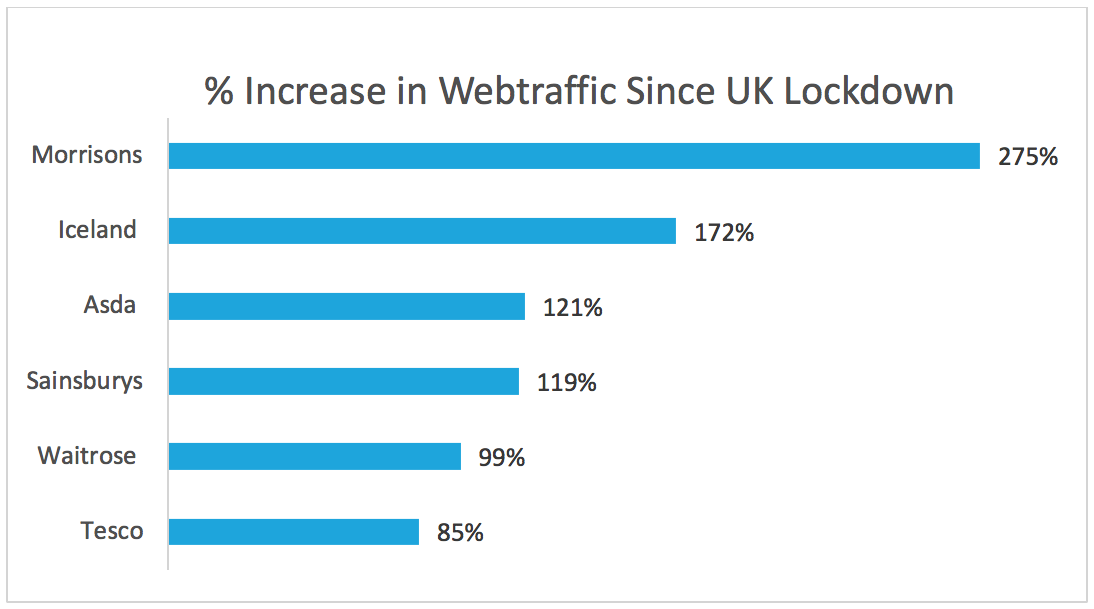London. This is part 2 of our Lockdown Diary series, with part 1 focusing on France. Today we look at the web navigation data in the UK: (based on the data collection1 on the 24th & 25th March), to look for new patterns in online behavior. And we found some!
The background: We passively track our opted-in panel members’ web behavior – across all devices. Methodologies such as this, are more crucial than ever before in these challenging times, that are forcing us to use the web in ways we hadn’t to this extent before.
In the UK, lockdown became official on the 23rd of March.
Firstly, the message seems to have been widely received. One of the main changes we see is related to the audience of news websites. Many news outlets have been visited far more than usual. This is also the same for institutional websites like gov.co.uk (+ 95.7 % in number of visits).

The domestic organizational changes are also becoming apparent. Working remotely has resulted in significantly more usage of video conference tools – a +606% visits on zoom.us (data based on desktop usages).
People are also looking for more ways to keep children entertained. Disney Plus was just launched in the UK and we observed +987% increase in number of visits to it after lockdown was announced. Children are clearly focusing more on entertainment than education as Wikipedia and Your Dictionary only see a 15% increase.
Food is also a major issue. Ordering food at home is undoubtedly increasing: +180% for Uber Eats and +78.5% for Deliveroo (desktop usages) searches shows this. But it isn’t just food delivery searches that are rising. Food retailers are too. Iceland searches suggest an increase on long lasting frozen food.

And to finish on a positive message, the lockdown could be the occasion to do things that we usually don’t do, like:
- Cooking (+86% in searchers for Great British Chefs)
- DIY (+161% in searchers for DIY)
- Listen to audiobooks (+466% in searchers for Audible)
Something we can all be proud of is the community spirit growing. We see these times engendering new ways of supporting each other within local communities. This is evidenced by 120% + increases in searches for ‘next door’ and ‘local social network’
Measures based on 925,645 websites visits on desktop, from a n=1,780 national representative (gender, age – 18-65) UK sample, timeframe: 1st of March to 25th of March


